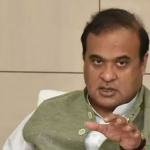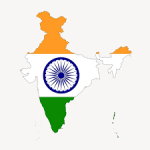The use of drones in agriculture began around 2010, with the introduction of basic, hobbyist-grade drones equipped with cameras.
The agriculture industry has undergone significant transformations over the years, from manual labor to mechanisation, and now, to the integration of cutting-edge technologies like drones. Drone technology has revolutionised the way farmers manage their crops, monitor their fields, and improve their yields, bringing in the latest chapter in farming technology advancements. In this article, we will explore how drones are used in agriculture and its impact on modern farming practices.
The use of drones in agriculture began around 2010, with the introduction of basic, hobbyist-grade drones equipped with cameras.
How are drones used in agriculture?
Primarily, crop monitoring with drones was done using aerial photography. Farmers would manually operate the drones, capturing images of their fields to identify areas of stress, disease, or pests. Although primitive, these early drones marked the beginning of a new era of drone mapping in precision agriculture.
As drone technology improved, so did its applications in agriculture. Let’s learn how drones are revolutionizing agriculture. The introduction of more advanced drones with better cameras, sensors, and navigation systems enabled farmers to collect more accurate and detailed data. This led to the development of specialised software for agriculture, such as precision farming platforms and crop analysis tools. These advancements enabled farmers to analyse data, create detailed maps, and make data-driven decisions.
The latest evolution of drone technology in agriculture involves the integration of artificial intelligence (AI) and the Internet of Things (IoT). AI-powered drones can now analyse data in real-time, detecting issues such as crop disease, pests, and nutrient deficiencies. IoT sensors and devices can be integrated with drones to collect additional data, such as soil moisture levels, temperature, and weather conditions. This enables farmers to make even more informed decisions, optimising crop yields and reducing waste.
Applications in Agriculture
Drones are being used in various applications in agriculture, including:
1. Crop Monitoring: Drones equipped with cameras and sensors monitor crop health, growth, and development. Crop monitoring with drones has significantly reduced the time and effort of the function.
2. Precision Farming: Drones create detailed maps of fields, enabling farmers to apply precise amounts of water, fertiliser, and pesticides.
3. Crop Spraying: Drones equipped with sprayers apply targeted amounts of pesticides, reducing waste and environmental impact. Several farmers across India have adopted drone crop spraying solutions.
4. Livestock Monitoring: Drones monitor livestock health, behaviour, and movement patterns.
5. Soil Analysis: Drones equipped with sensors analyse soil conditions, enabling farmers to optimise soil health.
Benefits and Challenges
The adoption of drone technology in agriculture has numerous benefits, including:
1. Increased Efficiency: Drones reduce labour costs and increase the speed of data collection.
2. Improved Accuracy: Drones provide high-resolution images and detailed data, enabling farmers to make more informed decisions.
3. Enhanced Crop Yields: Drones help farmers optimise crop growth, leading to increased yields and reduced waste.
However, there are also challenges associated with the adoption of drone technology in agriculture, including:
1. Regulatory Frameworks: Governments are still developing regulatory frameworks for the use of drones in agriculture.
2. Data Management: Farmers need to manage and analyse large amounts of data collected by drones.
3. Cybersecurity: Drones and associated systems are vulnerable to cyber threats, which can compromise data and disrupt operations.
The evolution of drone technology in agriculture has transformed the way farmers manage their crops, monitor their fields, and optimise their yields. With farming technology advancements, we can expect to see even more innovative applications in agriculture. However, it is essential to address the challenges associated with the adoption of drone technology, including regulatory frameworks, data management, and cybersecurity. By doing so, we can ensure that drone technology continues to revolutionise the agriculture industry, improving efficiency, accuracy, and crop yields.







